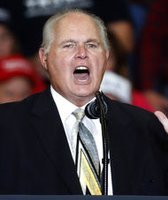Get PolitiFact in your inbox.
President Donald Trump vowed on the campaign trail to replace the Affordable Care Act with "something terrific." The American Health Care Act is the first iteration of that plan.
PolitiFact’s Trump-O-Meter is tracking 103 campaign promises Trump made in the run-up to the Nov. 8 election, including a slew regarding health care. Beyond a broad promise to repeal and replace President Barack Obama’s signature health care law, Trump has much work to do.
According to a PolitiFact review, the legislation fails to live up to many of Trump’s campaign promises.
Sell insurance across state lines
Both in the Republican primary debates and on his campaign website, Trump talked about making sure people can buy health insurance from companies in other states. Yet the American Health Care Act drafted by House Republicans is silent on selling across state lines.
The hitch is, House Speaker Paul Ryan explained, the surest and quickest path to repealing key elements of the Affordable Care Act is through a congressional maneuver called budget reconciliation. Under those rules, a simple majority in the Senate assures passage, rather than the 60 votes needed to stop a filibuster.
That’s a big advantage for Senate Republicans, who hold 52 seats.
But the budget reconciliation rules limit what can be included to direct changes in taxes or spending. So removing taxes on the well-to-do and reducing Medicaid payments to states are fine. Selling across state lines might not pass muster.
"Don't worry, getting rid of state lines, which will promote competition, will be in phase 2 & 3 of healthcare rollout," Trump tweeted March 7.
Maybe so. But for now, this promise is Stalled.
Making premiums tax deductible
Trump promised to let Americans treat health insurance premiums as a tax deduction. But it’s also missing from the House GOP bill.
Private health policy consultant Robert Laszewski told us that House Republicans considered the deduction option but settled on something else.
"The Republicans have just had a battle — advanceable tax credits or tax deductibility," Laszewski said. "Advanceable tax credits won out."
Advanceable tax credits allow taxpayers who purchase their own insurance to reduce their tax bills by the amount of the tax credit. The credit ranges between $2,000 and $4,000 with older Americans receiving more.
What’s the difference?
Basically a credit benefits lower-income Americans whereas a tax deduction would have done more to help the wealthy. But a credit won’t cover all costs.
Laszewski said he thinks there’s zero chance the tax deductibility approach will come back.
For now, we rate this promise Stalled.
Don’t cut Medicaid
Trump promised to protect Medicaid, the government-run health insurance program that primarily serves poor Americans.
But the House GOP bill reduces federal spending on Medicaid by $880 billion over 10 years, 25 percent less than under current law, according to an analysis by the nonpartisan Congressional Budget Office.
Specifically, the House plan scales back enhanced federal funding for 31 states that expanded Medicaid eligibility requirements, as permitted by the Affordable Care Act. If the law passes and the states don’t revert to their old eligibility requirements, it could force states to pay a much larger share of the costs.
The Republican proposal also places a cap on spending per Medicaid enrollee. Under current law, state governments reimburse medical providers who serve Medicaid patients, and the federal government in turn reimburses state governments for a portion of those costs. The GOP proposal would limit the federal government’s spending to a per-enrollee amount, based on the consumer price index for medical care, a way of measuring price changes among medical products and services. This might force states to decide whether to limit the services they offer or put more of their own money into Medicaid.
The CBO predicts that these changes, among others, will result in 14 million fewer Medicaid enrollees — there are currently 68.6 million enrolled — which would also cause the federal government to spend less on the program.
Trump’s promise, again, is Stalled.
Increase price transparency
Trump promised to improve transparency in pricing so patients can shop around for the best price. The House GOP plan includes no such measure.
Michael Tanner, senior fellow at the libertarian-oriented CATO Institute, told us, "as far as I know there haven’t been any indications of changes."
The press office at the American Hospital Association, a group with a direct stake in publicizing the cost of services, also said they hadn’t heard of anything.
We asked Ryan’s office if something was in the works, but didn’t hear back. Ditto for the White House.
Already, under Obamacare, the Centers for Medicare and Medicaid Services issued guidelines for hospitals to list the price of standard procedures. Those have been in place since 2014, but they give hospitals some wiggle room. They could post their charges online, or supply them only if patients and their families requested them.
This promise rates Stalled.
Block grant Medicaid to states
Trump also promised to disburse a set amount of Medicaid funding to states without strings attached, a popular conservative concept known as block grants.
Under current law, state governments reimburse medical providers who serve Medicaid patients, and the federal government in turn reimburses state governments for a portion of those costs. Trump wants the federal government to provide states a fixed amount from the federal government to spend however they want.
The proposal is not part of the House GOP bill.
Like a block grant, the Republican health care proposal places caps on the amount the federal government gives each state year to year to cover Medicaid. But unlike a block grant, the cap would fluctuate with enrollment.
The bill would establish per capita caps, another policy idea popular with Republicans. This would limit the federal government’s grants based on the number of people enrolled in Medicaid in that state and the consumer price index for medical care, a way of measuring price changes among medical products and services.
Administering Medicaid through a per-enrollee cap tied to the consumer price index means that a state’s grant would go up if more people enrolled in Medicaid or if the price of medical services went up generally.
This promise, too, is Stalled.
Our Sources
Listed in the story.

















































